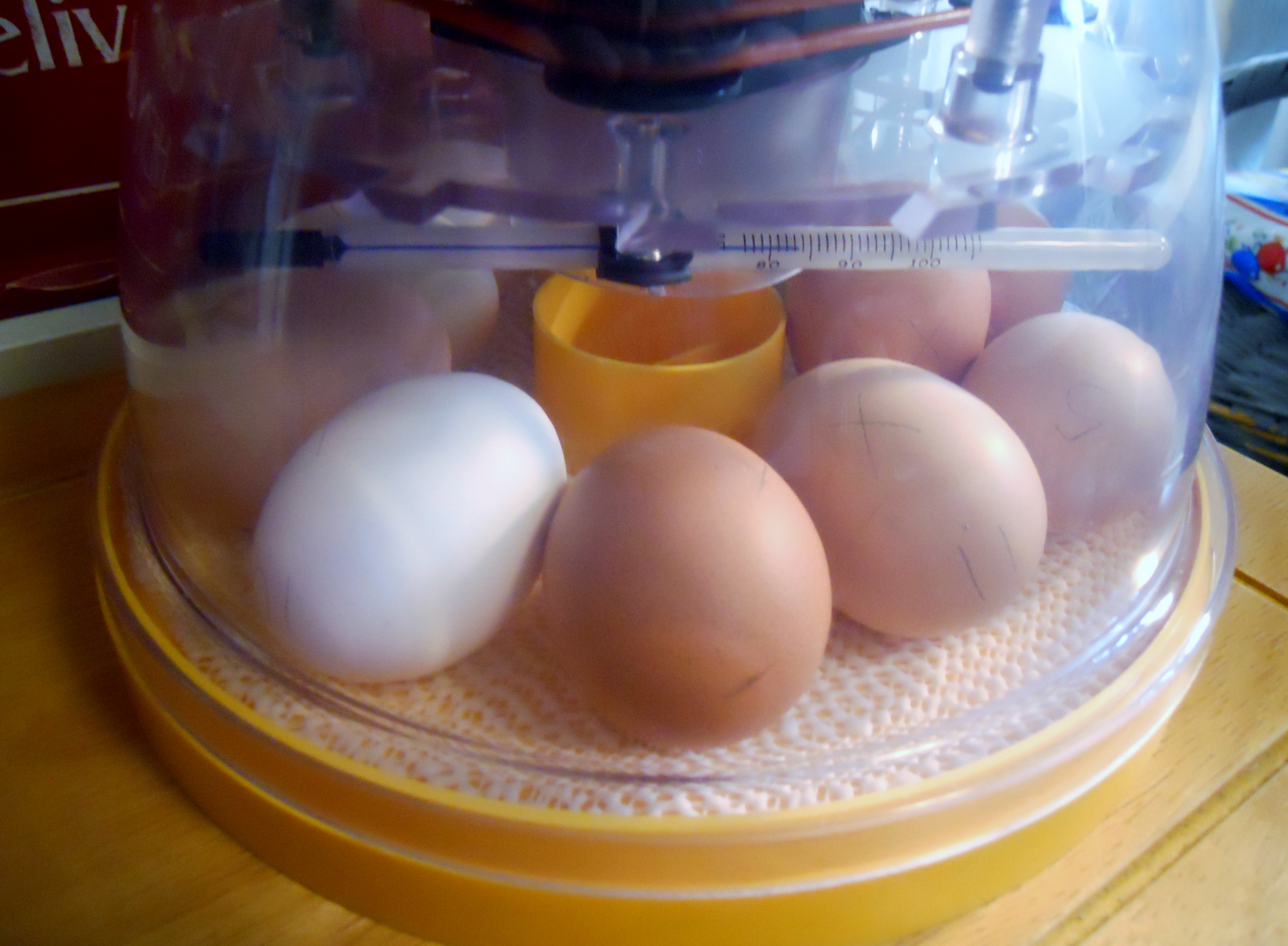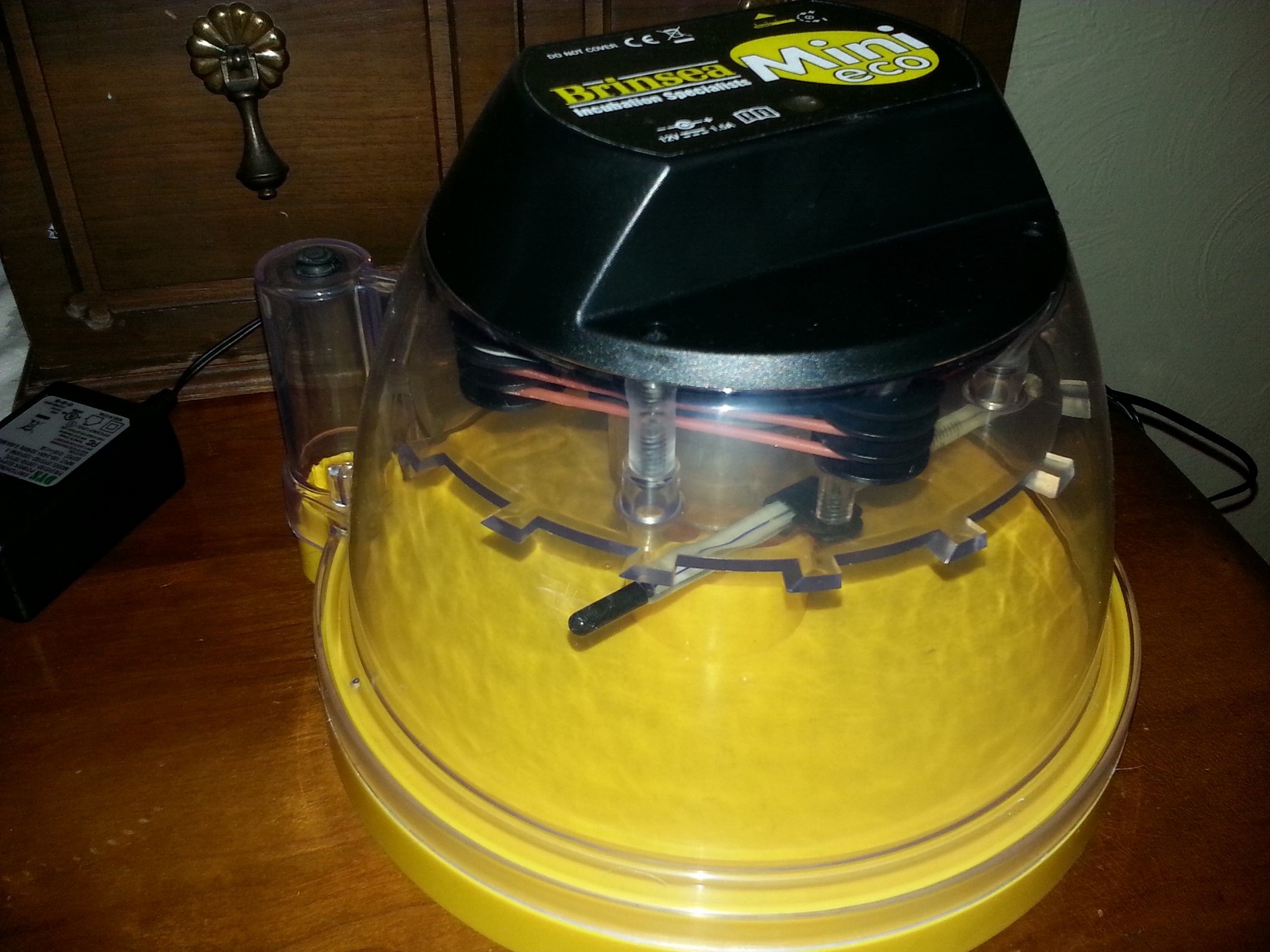
One week ago, our dining room was a frenzy of hatching eggs. Well, if 8 chicken eggs qualifies as a frenzy! As some of you know, our first foray into incubating eggs last spring ended in the hatching of just … Continue reading

One week ago, our dining room was a frenzy of hatching eggs. Well, if 8 chicken eggs qualifies as a frenzy! As some of you know, our first foray into incubating eggs last spring ended in the hatching of just … Continue reading
Well, our bumbling first-time attempt at incubating eggs has just about come to a close. We still have two eggs in the incubator that look to still be viable, so we are giving them another day before we “call the hatch.” While we had hoped for a higher hatch rate (we are currently at 30%), we knew there were risks: ordering hatching eggs to be delivered via U.S. post, our electricity went out for 8 hours, and using our incubator for the first-time. Not to mention, our own beginner’s jitters. Still, we hatched three healthy, spunky chicks!
The first pip was on Monday night, the night of day 20 and Baby #1 was born about 18 hours later, at mid-day on Day 21. We could hear more cheeps coming from the eggs and on Wednesday morning we had two more pips. These two chicks hatched fairly quickly and both were out of the shells by mid-morning.
This chick got herself unzipped in just about an hour of steady work. We sipped our early morning coffee (it was about 6:30 am) and watched as she worked her way around the shell. Our visibility was good for hatch #2.
While Kori had to go to work, Teri was able to watch and report on Hatch #3–this was an Easter Egger/Ameraucana egg and we were so hoping at least one of the two we incubated would hatch.
This chick took a few moments to rest, all curled up in the remaining shell, before completing the hatch. It gave us a chance to see how chicks position themselves for hatching. While we’d seen this in books, it is always amazing to see the real thing happening in real life!
She finally pushed her way out into the world and flopped out all soppy wet. She only rested for a few minutes, however, before she started making her way around the incubator in an awkward scootch.
And here we have the three newest additions at Raggedy Hen Farm! We may be adding a few more to round out this spring’s babies, and we have learned a ton from our first incubating adventure. Welcome chicks!
If you’d like to watch the video of the first egg hatching, you can find it on our Youtube channel!

After a full week of incubating adventure (including the loss of electricity for 8 hours), we’ve candled our eggs to find we could easily see into five of the light-shelled ones–four are still developing (we could even see the embryos … Continue reading
The incubation adventure continues as we turn the eggs 3-5 times a day, making sure that they do not spend the night on the same side two nights in a row. We mark some important data on a spreadsheet each time we turn the eggs: the room temperature, the incubator temperature, the time we turn, whether or not we add water, and any comments about the eggs themselves. On day 2, egg #2 had a crack, so we removed that one. Once and egg is cracked, bacteria gets inside (and the temperature can no longer be regulated) and the embryo, if it was developing, will die, so there is no point in leaving it in the incubator. We are not sure how the crack happened, but it is an expected reality of a risky venture.
Meanwhile, we just keep carefully turning and monitoring the temperature and humidity. We have no way of knowing what is going on inside the eggs and they look exactly the same as they did the day we set them in the incubator. We can only hope that all is going well (while preparing ourselves for whatever the outcome might be.) We are getting anxious for day 7, when we get to candle the egglets and see if we can determine how well they are developing! Stay tuned…

After letting our hatching eggs rest for several hours, we proceeded to see how best we could fit them into the already-running incubator. We managed to get 11 of the fertilized eggs in there comfortably and now the 21-day incubation … Continue reading

We’re excited, we’re nervous, and we’re almost ready…we’ve decided to attempt to incubate and hatch some chicken eggs this spring as we “level up” on our chicken keeping. We’ve purchased a Mini Eco incubator (made by Brisnea), after much research, … Continue reading